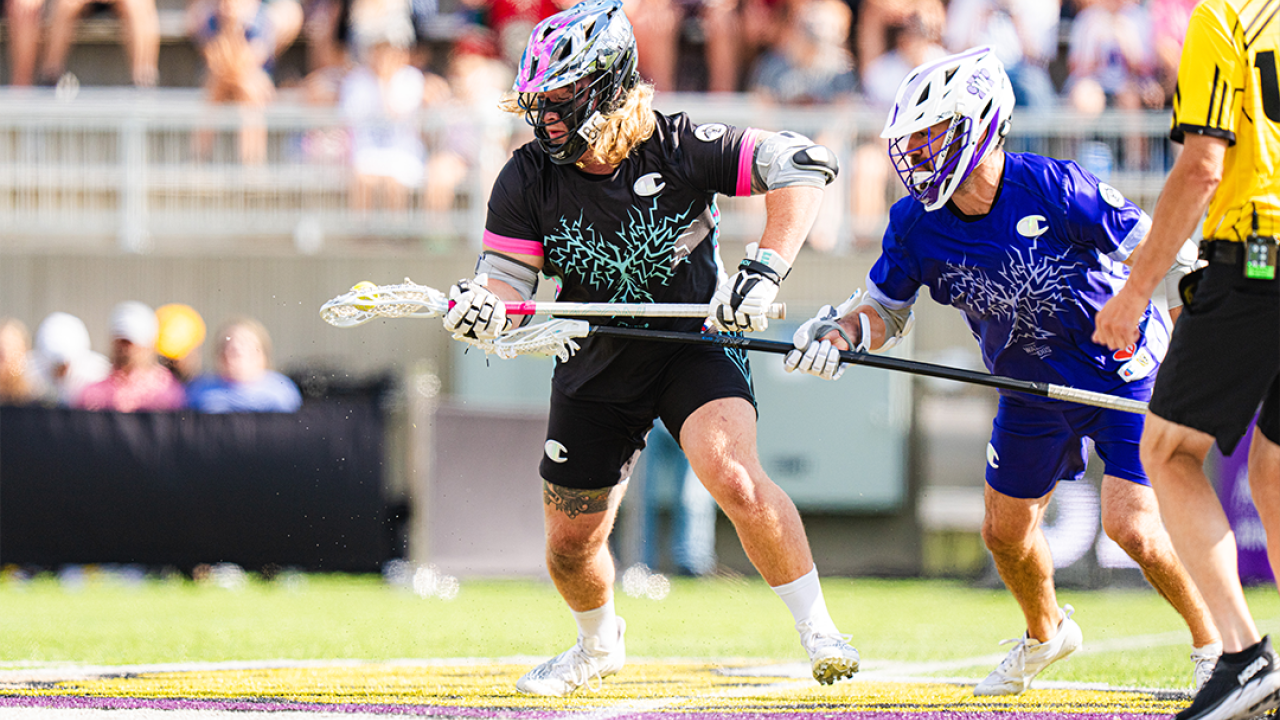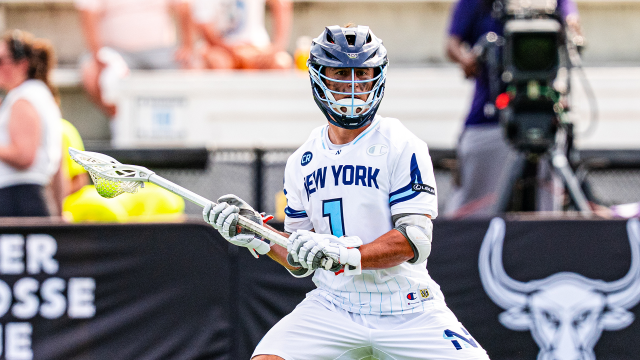
To Concede or Not to Concede? That is the Question (Around PLL Faceoffs)
MINNEAPOLIS — It was one of the stranger games Connor Farrell could recall participating in.
On paper, it was just about as good a showing as the Chrome faceoff specialist could ever ask for. Farrell, the lively and muscle-bound man out of Long Island University, won just about every clamp automatically, finishing his performance against the Waterdogs with 18 wins in 19 attempts. That 94.7-percent success rate is a new Premier Lacrosse League record.
That only tells half the story. The Waterdogs expected Farrell would dominate at the stripe based on the Waterdogs’ lack of success there during the first three weeks of the season, so head coach Andy Copelan decided to employ an intriguing strategy — concede the faceoff entirely.
Copelan and the defending champions dressed no faceoff specialist, opting instead for an additional short-stick defensive midfielder. Defenseman Eli Gobrecht lined up across from Farrell with a pole, working to push his foe back into his own end to give the Waterdogs’ wings and defensemen time to get into position.
“The challenging part is just finding the right guy open,” Farrell said. “They’re locking the wings. They’re locking all the attackmen. You’ve just got to make sure you make a good throw. You’ve got to stay in it, make sure you’re focused.”
Unfortunately for Farrell and the Chrome, that right pass didn’t always come. The Waterdogs forced the Chrome into 24 turnovers — 14 in the first half — in the Dogs’ 10-7 win in Minneapolis on Saturday. While the Waterdogs’ defensive unit was up for the challenge when tested, possession often didn’t even get that far. Copelan’s ground ball squad, featuring Zach Currier and Ryland Rees, caused havoc.
“I was winning the possessions, but I wasn’t making the smartest plays in the first half,” Farrell said. “I needed to take my time. Not slow it down, because it’s a short clock, but just look for the better opportunity for me to pass the ball.”
Copelan’s strategy marks the latest chapter in an ongoing discussion about the value of the faceoff position, a conversation recently spurred by the Premier Lacrosse League’s rule change for 2023. The league opted to cut the shot clock after a draw from 52 seconds to 32 seconds as part of a handful of adjustments announced leading up to Week 1 in Albany, New York.
Any shot clock diminishes the value of the faceoff, with both teams nearly assured a certain number of possessions. Cutting the clock even shorter exacerbates that impact, especially as teams focus on pushing faceoff winners back into their own zone to kill more time. Perhaps it’s better to lose the faceoff, giving the short possession to your opponent while hopefully getting the ensuing 52 seconds after a defensive stand.
Teams can additionally employ a lineup in preparation of losing the faceoff, sending out defensive personnel from the jump to negate the need to sub. An additional SSDM also means fresher legs, especially in the closing minutes.
That’s led to some, including Sticks In’s Dan Arestia, to mull the idea of a team rolling out a gameday roster without a FOGO. The Waterdogs were a strong candidate, having won just 28 percent of draws with James Reilly and Zac Tucci through the first three weeks.
Copelan noted the Waterdogs had three potential strategies without a FOGO while speaking with the PLL’s Wyatt Miller prior to last weekend’s action. Options included facing off with Currier as well as putting a wing in the attacking zone.
“We utilized all three,” Copelan said after the win. “I thought the Chrome came in with a couple really good plans. They adjusted, we adjusted. It just kind of felt like counter punch and counter punch. It was kind of a fun little chess match.”
Adjustments will continue as teams now have film on a no-FOGO strategy while simultaneously getting more accustomed to the shorter clock on the offensive end. Copelan, too, is ready to be flexible. The faceoff has not entirely been struck from the team’s gameplan.
“By no stretch of the imagination am I married to this whole thing,” Copelan said. “I think it’s a learning experience for all involved. I think having this as an option moving forward is a really good thing for us, but it is probably going to change on a week-to-week basis.”
Whether Copelan goes back to a faceoff specialist or not, the conversation around the faceoff is unlikely to go away. A look at the standings only fuels discussion. Two of the top three teams in faceoff win percentage, the Atlas and the Chrome, sit at the bottom of the standings at 1-3.
The exception is the Archers, who top the table at 3-1 and are getting an impressive 70.5-percent success rate from rookie Mike Sisselberger. The Whipsnakes tried forcing him backward this weekend, but he dealt with it well.
“I thought they tried to do a little bit of that today, but Siss, he’s a bowling ball,” Archers head coach Chris Bates said. “If he gets the ball, he can handle pressure. He handled the Whipsnakes’ poles and did a great job of getting rid of it.”
Copelan intimated that this won’t be the last time the Waterdogs go without a faceoff specialist. He’ll factor the favored strategy of the other team’s FOGO, the other team’s clearing pattern and a handful of other variables he’s still working to figure out.
“As more teams maybe do this, we get a bit more film study and you get to see how various teams are going to go ahead and counter it,” Copelan said. “But it definitely is a strategy we will keep in the back pocket.”
Jack Goods
Jack Goods has covered the National Lacrosse League for USA Lacrosse Magazine since 2018 and the Premier Lacrosse League since its inception in 2019. A Buffalo, N.Y., native, Goods previously covered the Buffalo Bandits for The Buffalo News and spent time as a sports editor in Eau Claire, Wisconsin. He now works as a communication specialist at his alma mater, Marquette University, in Milwaukee.

Categories
Related Articles




